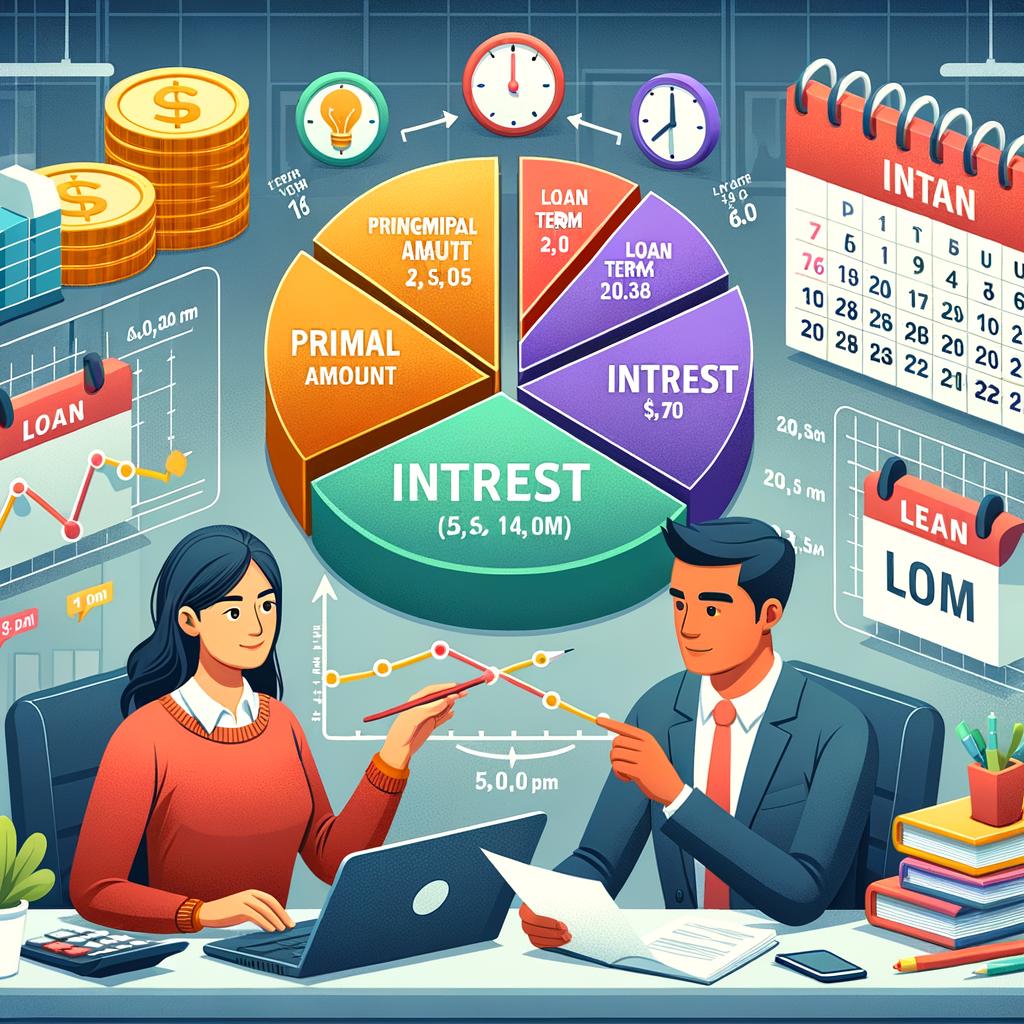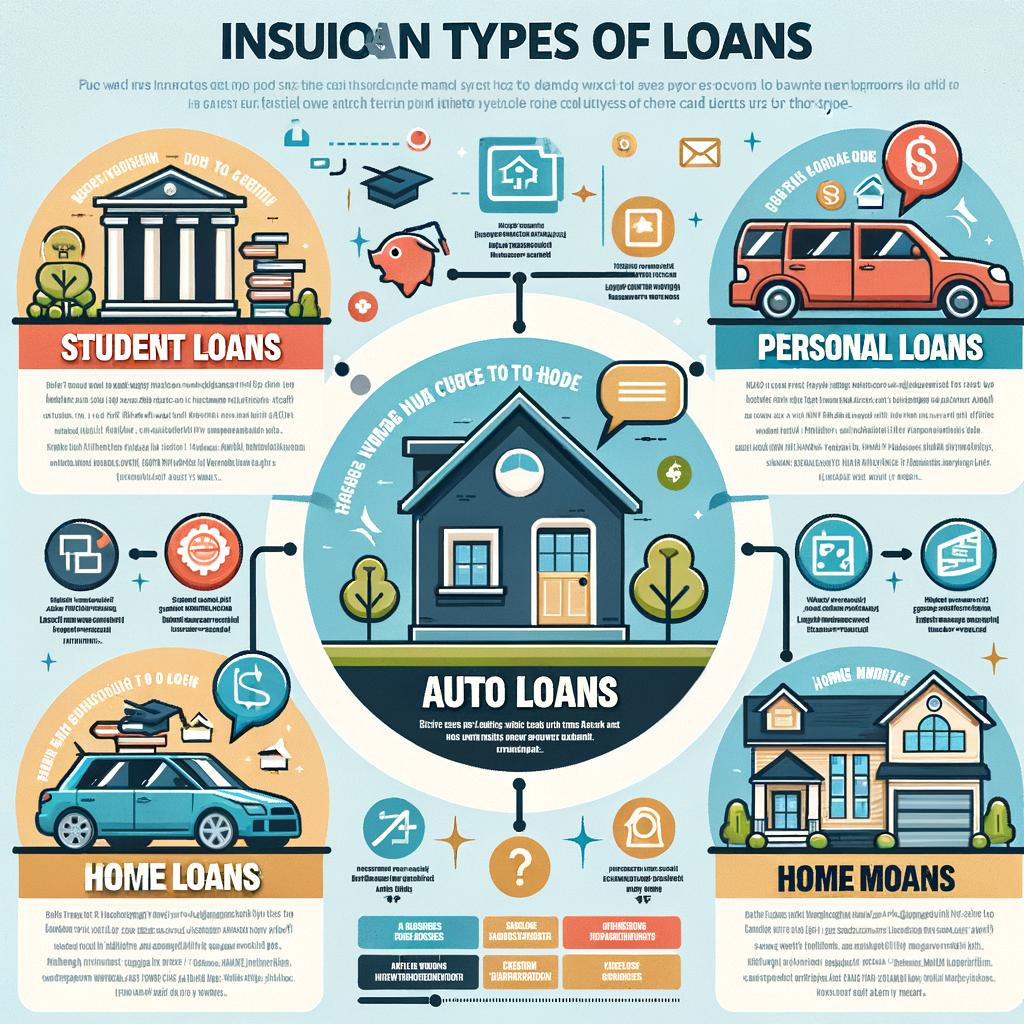Navigating the waters of financial decisions can often feel like steering a ship in the midst of a storm. One of the significant challenges many face is understanding how to calculate loan payments and costs, a task that can seem daunting to both novices and seasoned borrowers alike. In this article, we’re set to demystify the process of crunching those crucial numbers. Whether you’re contemplating a home mortgage, a car loan, or a personal loan to consolidate debt, knowing exactly how your repayments and costs break down is crucial to steering clear of financial reefs. Armed with clear guidance and useful calculation formulas, this guide will illuminate the pathway through the often foggy terrain of loan agreements, helping you to make informed decisions with confidence and ease.
Table of Contents
- Understanding the Basics of Loan Payments
- Diving Deeper into Interest Rates and Loan Terms
- Maximizing Savings with Smart Payment Strategies
- Choosing the Right Loan Type for You
- Closing Remarks

Understanding the Basics of Loan Payments
Delving into the realm of loan repayments is crucial for any borrower to ensure that they fully comprehend where their hard-earned money is going each month. Here, we’ll break down the components of loan payments and elucidate the calculations behind them.
The majority of loan payments consist of two key elements: the principal and the interest. The principal is the amount that you originally borrowed, whereas the interest is the cost paid to the lender for borrowing that money. However, depending on the type of loan and your agreement with the lender, other components such as insurance and taxes might also be included in your monthly payments.
- Principal: This is the actual amount of money that you borrowed from the lender.
- Interest: This is essentially the fee you pay for the privilege of borrowing money and is usually expressed as a percentage of the principal.
- Insurance: Some loans require insurance to protect the lender in case of default.
- Taxes: Property loans might include property taxes that are prorated into monthly costs.
To calculate your monthly loan payment, you can use the formula:
PMT = P * (r(1+r)^n) / ((1+r)^N - 1)
Where:
PMT is the monthly payment,
P is the loan principal or amount borrowed,
r is the monthly interest rate (annual rate divided by 12 months),
n is the total number of payments (loan term in years multiplied by 12).
Here’s a simple illustration of how different interest rates and loan terms can affect your monthly payments. Let’s assume a loan amount of $20,000 at various interest rates and terms:
| Interest Rate | Term (Years) | Monthly Payment |
|---|---|---|
| 5% | 5 | $377.42 |
| 5% | 10 | $212.13 |
| 10% | 5 | $424.94 |
Understanding these basics can help you choose the right loan according to your financial situation and expectations. Keep in mind that opting for a longer-term loan means lower monthly payments but increases the total interest paid over the life of the loan.
Now that you’re more acquainted with how to calculate your loan payments, you’ll be better equipped to manage your finances and make informed choices. Remember, a loan is not just an immediate source of funds; it’s a financial commitment that will impact your budget for months or years. Choose wisely and plan ahead to maintain financial stability.

Diving Deeper into Interest Rates and Loan Terms
When delving into the world of loans, understanding the interplay between interest rates and loan terms is crucial for making informed financial decisions. These two components directly influence the size of your monthly payment and the total cost of the loan over its lifetime.
Interest Rates: The interest rate on a loan determines how much extra you will pay back in addition to the borrowed amount. It’s essentially the cost of borrowing money. Interest rates can be fixed or variable; the former remains the same throughout the life of the loan, whereas the latter can change based on market conditions.
Loan Terms: This refers to the duration over which you will repay the loan. Common terms are 15, 20, or 30 years for mortgages, and 2 to 7 years for personal loans. Extending the loan term decreases monthly payments but increases the total interest paid.
- Monthly Payments: Lower interest rates and longer loan terms can reduce your monthly payments.
- Total Cost: A longer term, while lowering monthly outlay, actually increases the total amount paid due to the prolonged period of interest accumulation.
Here’s a simplistic example table showing different scenarios:
| Loan Amount | Interest Rate | Term Length | Monthly Payment | Total Cost |
|---|---|---|---|---|
| $10,000 | 5% | 5 years | $188.71 | $11,322.74 |
| $10,000 | 5% | 10 years | $106.07 | $12,728.40 |
| $10,000 | 3% | 5 years | $179.69 | $10,781.40 |
To effectively calculate the monthly payments and the total interest expense of a loan, one can use a loan amortization calculator. These calculators factor in the principal, interest rate, and term to provide a detailed payment schedule. Each payment consists of a portion that pays off the principal and another that goes towards the interest.
A pivotal tip for prospective borrowers is to meticulously plan their finances considering their ability and commitment to meet the monthly payments. Occasionally reviewing loan offers for lower interest rates or better terms can also lead to major savings, especially when consolidating existing debts.
Lastly, while focusing on low monthly payments can seem appealing, consider a healthy balance between manageable payments and the total duration of the loan to minimize overall financial strain. Making an informed choice can save thousands in interest payments and help achieve financial freedom sooner.

Maximizing Savings with Smart Payment Strategies
Understanding your payment options is crucial when trying to save money on loans. Payments can often be structured in various ways, and choosing the right one might reduce the total cost of the loan.
Firstly, consider opting for automatic payments. Setting up an auto-pay system typically earns a slight interest rate reduction from lenders, which, while it may seem small, can significantly reduce the interest paid over the life of the loan.
- Bi-weekly payments: Instead of monthly payments, consider bi-weekly payments. This strategy helps reduce your interest accumulation because your payments are applied more frequently.
- Lump-sum payments: Whenever possible, make extra lump-sum payments towards the principal amount. This reduces the total interest as interest is calculated on the remaining principal.
Calculating the potential savings from different payment strategies can be insightful. Consider using an online loan calculator or consult with your financial advisor to see how different payment frequencies impact your loan.
Debt snowballing is another strategic approach where you prioritize paying off loans with the smallest balances first while maintaining minimum payments on others. Once each debt is paid off, the freed-up funds move to the next smallest debt, creating momentum – or a ‘snowball effect’ – that can help clear your debts quicker and cheaper.
| Loan Amount | Interest Rate | Term (years) | Payment Method | Total Savings |
|---|---|---|---|---|
| $20,000 | 5% | 5 | Bi-weekly | $300 |
| $20,000 | 5% | 5 | Monthly | — |
| 5% | 5 | Lump-Sum Annual | $450 |
In reviewing your payment options, also think about refinancing your loan if interest rates have dropped since you took out the original loan. Refinancing can potentially reduce both your payment amounts and the total cost over the life of the loan.
Another aspect to watch out for is the potential for penalties. Some loans include penalties for early repayment, which could negate some of the benefits of strategies like making extra payments or refinancing. Always read the fine print before adjusting your payment strategy.
Lastly, keep meticulous records of all your payments—including details on how much is going towards the principal versus interest. This will not only help keep you on track but will also motivate you by making the benefits of your strategies more tangible. Regular reviews of your loan statements and payments can spark additional ideas on how to tweak your approaches for even better savings.
Saving on loan payments requires a mix of discipline, knowledge, and strategic planning. By integrating a combination of these tactics, you can maximize savings and reduce the financial burden.

Choosing the Right Loan Type for You
Embarking on the journey to find the perfect loan can often feel overwhelming. With a myriad of loan types available, it’s crucial to pinpoint which option aligns best with your financial situation and goals. Below, we explore several common categories of loans, their ideal uses, and what to consider before making a decision.
Secured vs. Unsecured Loans: Understanding the distinction between these is vital. Secured loans require collateral like a home or car. They typically offer lower interest rates due to the lower risk posed to lenders. Conversely, unsecured loans don’t require collateral but often come with higher interest rates.
Fixed-Rate Loans: These loans maintain the same interest rate throughout the term, making it easier to budget month to month. They are ideal for those who prefer consistency and stability in their payment schedules.
Variable-Rate Loans: Unlike fixed-rate, the interest rates on these loans can change based on market conditions. They can start off lower than fixed rates but possess the potential to increase. This option is best suited for those who can accommodate fluctuations in their monthly budget.
Mortgages: Specifically designed for funding the purchase of a property, mortgages are typically long-term loans. They come in various forms including fixed-rate, adjustable-rate, and interest-only mortgages. Choosing the right one depends largely on how long you plan to stay in the home and how much risk you’re willing to take with interest rate changes.
Personal Loans: These can be used for a variety of purposes from consolidating debt to funding major purchases. Personal loans are generally unsecured and the eligibility and interest rates can vary widely based on your credit score.
Auto Loans: Tailored for the purchase of vehicles, these loans are secured by the car itself. Terms can vary based on new vs. used vehicles, and loans for longer terms generally have higher interest rates.
Student Loans: Designed to help cover the cost of college education. There are federal and private options, with federal loans typically offering lower interest rates and more flexible repayment terms.
When considering which loan is right for you, it’s essential to assess your financial health and future plans. Look at your current income, credit score, and expenditure to determine what you realistically can repay. It’s also wise to ponder how stable your income is—will you be able to manage payments if there’s an unexpected change?
An effective way to compare loan types is by looking at their APR (Annual Percentage Rate) which includes interest rates plus fees. Here’s a simple comparison of typical APR ranges you might expect:
| Loan Type | Typical APR |
|---|---|
| Secured Personal Loan | 5-7% |
| Unsecured Personal Loan | 6-36% |
| Auto Loan | 3-10% |
| Fixed-Rate Mortgage | 3-6% |
Understanding your needs and the associated risks will guide you towards a loan that not only fits your budget but also propels you towards financial peace and stability. Remember, taking out a loan is not just about receiving the funds; it’s about crafting a commitment that you are confident in managing over its duration.
Closing Remarks
As you have seen, diving deep into the numbers that shape your financial landscape doesn’t have to be an enigmatic journey through the mystical land of finance. By mastering the art of calculating loan payments and costs, you have taken solid command of your economic ship, steering away from potential icebergs hidden in deceptive loans, and sailing closer towards the shores of clear, informed financial decisions. Remember, understanding the complete picture of your loan conditions empowers you to negotiate better terms or select the most suitable financing options, ultimately shaping your financial future with precision and awareness. Equip yourself with these calculative skills and watch your confidence grow with each payment made — no magic wand needed, just a touch of math and an embrace of knowledge. Keep revisiting these principles, as they are timeless navigators in the ever-evolving sea of personal finance.
